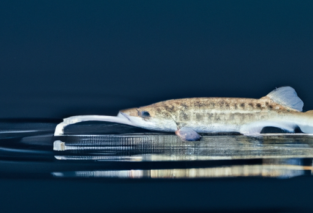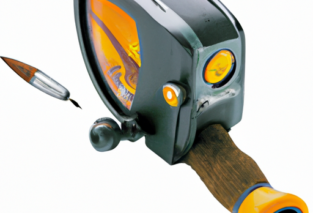Are you a beginner in the world of fishing? If so, you may find yourself overwhelmed by the numerous options available when it comes to choosing the perfect fishing rod. That’s where “An Introduction to Different Fishing Rod Materials for Rookies” comes in. This comprehensive guide is designed specifically for beginners, providing an overview of the various materials used in fishing rods and helping you make an informed decision. Whether you’re interested in graphite, fiberglass, or bamboo rods, this article will help you understand the advantages and disadvantages of each material, ensuring that you start your fishing journey on the right foot.

Graphite Fishing Rods
Composition and Characteristics
Graphite fishing rods are made from a composite material called graphite, also known as carbon fiber. This material is incredibly lightweight and offers excellent strength and durability. Graphite rods are typically made by wrapping layers of graphite fibers around a mandrel to form the rod’s blank, which is then coated with resin for added strength and smoothness.
One of the main characteristics of graphite fishing rods is their sensitivity. Due to the material’s low weight and high modulus (stiffness), graphite rods are highly sensitive to even the slightest nibble or bite. This makes them ideal for anglers who want to feel every movement of the fish and detect subtle strikes.
Advantages
One of the major advantages of graphite fishing rods is their lightweight nature. This makes them comfortable to hold for long periods and enables anglers to cast with ease. The lightweight design also allows for increased maneuverability, making it easier to control the fishing rod and make accurate casts.
Another advantage of graphite rods is their sensitivity. As mentioned earlier, graphite rods offer excellent sensitivity, allowing anglers to feel even the most delicate movements underwater. This sensitivity greatly enhances the angler’s ability to detect when a fish is biting, making it easier to set the hook and increase the chances of a successful catch.
Additionally, graphite fishing rods provide exceptional strength and durability. The material is known for its high tensile strength, meaning it can withstand heavy loads and resist bending or breaking. This durability ensures that the rod can handle the pressure of fighting powerful fish without compromising its performance.
Disadvantages
Despite their many advantages, graphite fishing rods do have some disadvantages. One of the main drawbacks is their relatively high cost compared to other types of fishing rods. Graphite rods are made from expensive materials, and the manufacturing process is more complex, leading to a higher price tag. However, many anglers are willing to invest in these rods due to their superior performance.
Another disadvantage of graphite rods is their brittleness. While they are generally durable, graphite rods can be more susceptible to snapping or breaking if subjected to excessive force or mishandling. It’s essential to handle these rods with care and avoid putting them under extreme pressure to prevent accidental damage.
Furthermore, graphite rods may not be ideal for heavy-duty fishing applications. They may lack the necessary backbone or stiffness required for fighting larger, more aggressive fish species. Anglers targeting big game fish or fishing in rough conditions may find that other materials, such as fiberglass or composite, offer better strength and resilience.
Fiberglass Fishing Rods
Composition and Characteristics
Fiberglass fishing rods are constructed using fiberglass, which is a reinforced plastic material consisting of fine glass fibers embedded in a polymer matrix. This material was one of the earliest materials used to make fishing rods and remains popular to this day due to its unique characteristics.
One of the defining characteristics of fiberglass rods is their flexibility. Unlike graphite or carbon fiber rods, fiberglass rods have a slower action and a more forgiving nature. This means that they bend further down the blank when pressure is applied, allowing for a more gradual and controlled fight with the fish.
Advantages
One of the primary advantages of fiberglass fishing rods is their affordability. Fiberglass is a relatively inexpensive material, making fiberglass rods a budget-friendly option for beginner anglers or those on a tighter budget. Despite their lower cost, these rods still offer respectable performance and durability.
Another advantage of fiberglass rods is their excellent durability. Fiberglass is known for its toughness and resistance to impact, making it less prone to breakage or damage. This makes fiberglass rods a suitable choice for anglers who fish in rugged conditions or areas with rocky bottoms where the rod may come into contact with hard surfaces.
Additionally, fiberglass rods are well-suited for fishing techniques that require casting heavy lures or baits. The slower action of these rods allows for a more controlled and accurate casting motion, making them ideal for targeting larger fish species or fishing in areas with strong currents.
Disadvantages
While fiberglass rods have their strengths, they also have some disadvantages. One of the main drawbacks is their increased weight compared to graphite or carbon fiber rods. The fiberglass material is denser, resulting in a heavier rod that may cause fatigue during long fishing sessions. However, advancements in rod design and technology have helped to reduce the weight of fiberglass rods in recent years.
Another disadvantage of fiberglass rods is their reduced sensitivity. The slower action and flexibility of these rods make it more challenging to detect subtle movements or bites. Anglers may need to rely more on visual cues or the feel of the line to determine if a fish has taken the bait.
Furthermore, fiberglass rods may lack the high modulus or stiffness required for long-distance casting. Anglers who frequently cast over long distances may find that the slower action of fiberglass rods limits their casting distance and accuracy compared to stiffer materials like graphite or carbon fiber.

Carbon Fiber Fishing Rods
Composition and Characteristics
Carbon fiber fishing rods, also known as graphite rods, are made from a composite material called carbon fiber. Carbon fiber is a lightweight and incredibly strong material consisting of tightly-woven carbon strands bonded together with resin. This combination of strength and low weight makes carbon fiber fishing rods highly sought after among anglers.
Advantages
One of the primary advantages of carbon fiber fishing rods is their exceptional sensitivity. The low weight and high modulus of carbon fiber allow for unparalleled sensitivity, enabling anglers to detect even the faintest strikes or movements underwater. This sensitivity can significantly increase the chances of hooking a fish and enhance the overall fishing experience.
Carbon fiber rods are also known for their incredible strength-to-weight ratio. They offer exceptional stiffness and can withstand heavy loads without bending or breaking. This strength makes carbon fiber rods suitable for targeting larger fish species that require more robust tackle.
Another advantage of carbon fiber rods is their lightweight design. The low weight of these rods allows for comfortable and effortless casting, reducing strain and fatigue during extended fishing sessions. It also enhances the angler’s maneuverability, making it easier to control the rod and accurately place the bait or lure.
Disadvantages
Despite their many advantages, carbon fiber fishing rods do have some disadvantages. One of the main drawbacks is their higher cost compared to other types of fishing rods. Carbon fiber is an expensive material, and the manufacturing process is more complex, resulting in higher production costs. However, many anglers view this higher cost as a worthwhile investment due to the superior performance of carbon fiber rods.
Another potential downside of carbon fiber rods is their brittleness. While they are generally durable, carbon fiber rods can be more susceptible to snapping or breaking if subjected to excessive force or mishandling. It’s crucial to handle these rods with care and avoid putting them under extreme pressure to prevent accidental damage.
Furthermore, carbon fiber rods may not be as suitable for heavy-duty fishing applications. They may lack the necessary backbone or stiffness required for fighting larger, more aggressive fish species. Anglers targeting big game fish or fishing in challenging conditions may find that other materials, such as fiberglass or composite, offer better strength and resilience.

Bamboo Fishing Rods






